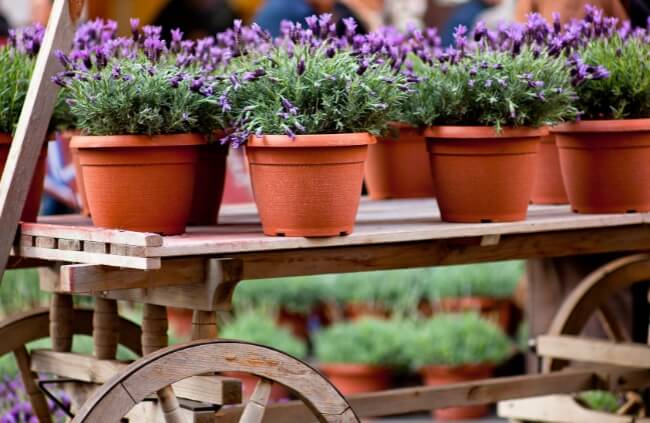Of all the fragrant plants that we can grow in our gardens, lavender is a popular choice. It perfumes your hand as you run your fingers through it and will taint your clothes even if you mildly brush against it.
And on a balmy summer’s night you can smell the aroma waft through the still air, catching your nostrils off guard but then gently soothing them and seducing your senses for more.
I admit I’m having an affair with this plant and if I weren’t already struggling our recent weekend trip to our local lavender farm has not helped my situation.
More...
Discovering Different Types of Lavender
The hedge we just removed was an old style Lavandula angustifolia (English lavender) that I had propagated from a plant at our last property. The scent, and flowering proficiency, were wonderful but it really is a plant that enjoys some space. More space than we could give it, anyway.
So our trip was to find a new, more compact style of lavender that offered a tantalising aroma. We wanted a variety that flowered for more than a few months over summer and could still be hedged. And, it wouldn’t take over the garden.

Walking around this farm where more than 75,000 lavender plants are growing from 90 different varieties and stemming from more than 20+ species, would be similar to walking through Willy Wonka’s Chocolate Factory. Where do you start?
The obvious place was with the species. Do we opt for another angustifolia? Or, do we begin perusing the French lavender (Lavandula dentata)? Maybe, the Spanish or Italian lavender (Lavandula stoechas) was a better match? And who could pass by the fern-like Lavandula multifida?
In the end we chose Lavandula intermedia for as its name suggests it was right in the middle. Not too big; compact growing shape; easy to hedge; prolific and long flowering season, and it won’t look dead when you prune it.
And who could walk away from a farm with this much lavender, and only buy one plant type? Not us, that’s for sure. So a Lavandula stoechas ‘Dark Plum’ found its way into our shopping bag as well.
How to Propagate Lavender
Lavender is very easy to propagate and most species will take from a single tip cutting planted directly in the soil. If you don’t get much success from that method then select semi-hardwood cuttings after the lavender has flowered. Dip the end in honey, or a rooting hormone powder, and pot out in a well-draining medium.

Keep the cuttings under glass for the first few weeks until some growth begins to show and then slowly wean them out into the open. I usually grow lavender cuttings in groups of 5 or 6 in the one pot, transferring them after they have shown a considerable amount of new growth.
Hedging Lavender
Hedging lavender is just as easy as propagating it. Depending on the species you are trying to hedge position the plants relatively close. A rule of 2/3 of the growing width is probably a good starting point.
It may seem strange to prune these plants as they grow, but after each flourish of blooms take your hedging shears and remove a good third off the plant’s bulk. The temptation will be to leave them to continue growing without pruning them but I can assure you that they will grow much quicker, and stronger, after being pruned.
Once the hedge has filled out and matured to most of its growing height, commence pruning it to shape. This is best done after the flowering season but with some lavenders, particularly angustifolia, you may need to prune again before it flowers again.
Caring for lavender is quite easy. They aren’t that receptive to liquid fertilisers due to their leaf structure but they will readily appreciate a good dose of sheep’s manure every season.
Published on June 6, 2023 by Nathan Schwartz
Last Updated on February 4, 2024




